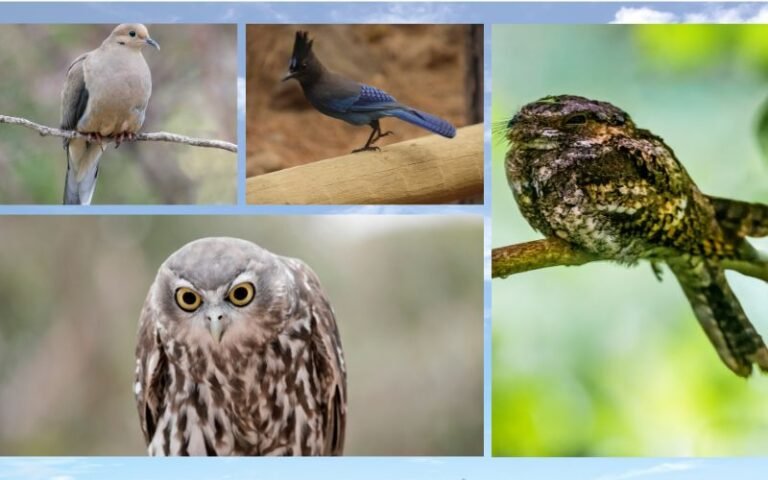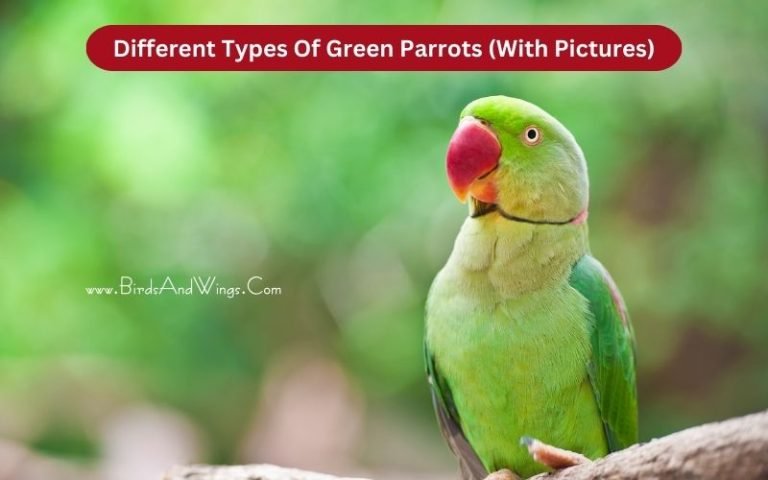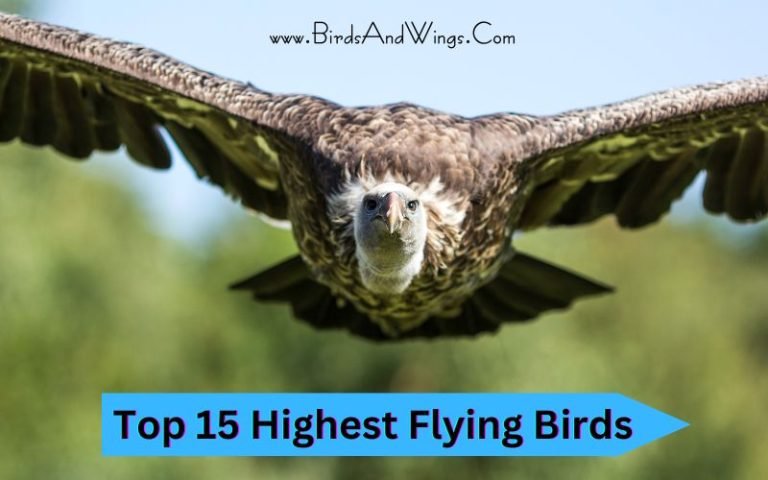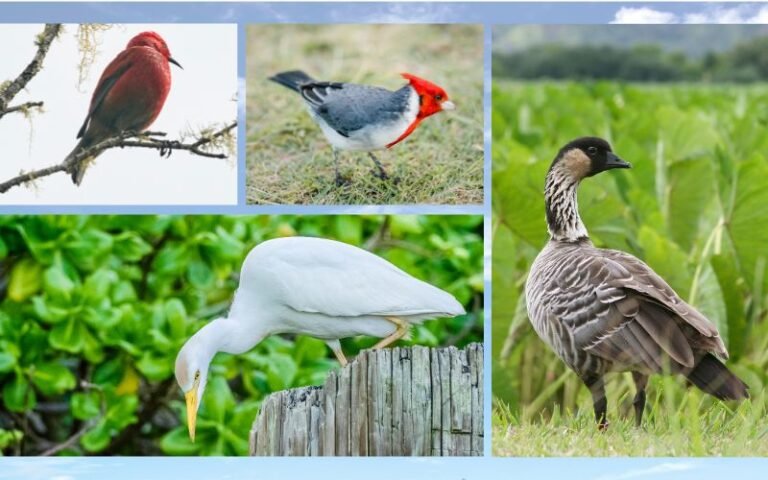15 Species of Hawks in Arkansas
Arkansas is a landlocked state located in the southern part of the US. This Arkansas is the place of the natural state.
You can tell if you visit this state once in your life as Arkansas is filled with the wealth of nature, engraved with Ozark and Ouachita mountains on each side of the state.
Apart from the mountains, it is deeply rooted with valleys, densely forested timberlands, and fertile lowlands with rich black soil. Undoubtedly, this state has rich habitats for wild animals especially for avian species.
If we talk about the Avian species, birds of prey, hawks are a famous breed in this state because of its abundant natural environment.
In this article, I will discuss the top 15 hawks in Arkansas state, including their physical description, such as size and wingspan, lifespan, native place, Diet, and other facts.
So, let’s explore the hawk species in Arkansas.
15 Species of Hawks in Arkansas
Arkansas is a city of natural wealth with fertilized black soil, forested timberlands, lowlands, and mountains.
As this state requires, it has plenty of natural sources, which make it one of the most evergreen and suitable habitats for hawk species.
In this section, I will briefly describe 15 hawk species in Arkansas state, along with their habitats, distribution, behavior, and other facts.
1. Red-Tailed Hawk

- Scientific name: Buteo jamaicensis
- Lifespan: around 10 to 12 years
- Wingspan: about 110–141 centimeters (3 ft 7 inches – 4 ft 8 inches)
- Native to: North America
- Size: 18 to 24 inches
- Food and diet: small animals, rodents, lagomorphs, reptiles, fish, invertebrates, lizards, mouse
Red-tailed hawks are the most observable hawks in Arkansas during winter. Researchers claim that about 18% of hawks are seen in this state in winter and 8% in summer.
Like their name, these hawks have wide red tails and brownish-black plumage. They also have broad, large, rounded wings with a pale underneath.
However, in winter, these red-tailed hawks are local to North America, including Arkansas state. They are mostly partial migrants, which means they travel within their range, including Canada and Alaska.
You can still find them in mixed forest areas, fields, woodlands, tall trees, or high bluffs. They also choose those places for their nesting and perching sites.
Similarly, they might inhabit wetlands, mountains, grasslands, and agricultural fields. As birds of prey, they hunt their prey and consume it.
If you want to see them breed, you can visit these places from late February through March. They have a unique courtship performance that will amaze you.
They dangle their legs, touch each other’s wings, or do cartwheels together. While they are flying, you might overhear their soaring and flapping sounds from the sky.
This soaring helps them conserve their energy while flying.
2. Cooper’s Hawk

- Scientific name: Accipiter cooperii
- Lifespan: up to 8 years
- Wingspan: 84 cm (33 in)
- Native to: North America
- Size: 35-46 cm
- Food or Diet: small birds, mammals, bats, mice, squirrels, chipmunks, reptiles and insects
Cooper’s hawks are the medium-sized hawks in Arkansas. These hawks have been the permanent residents of this state for all years.
Researchers have submitted the reports that about 4% of Cooper’s hawks have been observed in winter and in summer 2% of hawks have been spotted migrating to the north.
Although you can spot them in Arkansas, their breeding regions cover Canada and northern Mexico. These hawks of Arkansas prefer deciduous forests and mixed forests, especially foothills and mountainous regions, conifer forests, woodlands, farmlands, and floodplains for their habitats.
As for their appearance, Adult hawks have gray and reddish plumage on their body with long gray tails and black banding. Their tails have white features on the edges, and their face is pale, with a black cap and red Irish.
These hawks’ bills are slightly hooked and yellowish-black. You will be surprised by their bills because, with their strong bills, they can tear the flesh of prey within a minute.
They also have some bizarre vocalizations where they can make 40 different voices and variations during their breeding seasons.
If you overhear any harsh voices, note that they are from male hawks because they have harsher and louder voices than female hawks.
These hawks have some special techniques to hunt their prey. They do not rush to hunt their prey when they see them; rather, they circle around whole places and bushes and then attack their prey.
3. Northern Harrier

- Scientific name: Circus hudsonius
- Lifespan: around 16 years
- Wingspan: around 32.8 to 40.6 centimeters (12.9 inches-16.0 inches)
- Native to: Northern hemisphere in Canada, northernmost USA
- Size: 41–52 cm (16–20 in)
- Food and diet: songbirds, small rabbits, doves, insects, reptiles, snakes, lizards, etc.
Northern Harriers are also known as marsh hawks and ring-tailed hawks. They are also one of the most spotted hawks in Arkansas.
Apart from this state, you can find them in northern parts of the northern hemisphere, Canada, and the northernmost USA.
Researchers have claimed that among other hawks, 6% of northern harriers have been spotted in Arkansas state during winter. Mostly, in late August and September, you can spot them in this state.
To identify them, please note that these hawks have white collar rings around their neck and brownish-black plumage over their body.
Additionally, their preferred habitats are open areas, marshes, and woodlands. If you visit these places, you have a high chance of encountering these beautiful hawks personally.
Usually, these northern harriers do not stay with one mate for whole breeding seasons; rather they have been spotted to change their mates up to 5 five times in one breeding season.
Female hawks of Arkansas build their nests with grass, sticks, and leaves on the ground level or in dirt or vegetation.
Female hawks lay 4 to 8 eggs in the nests and incubate for 31 to 32 days. The male hawks usually feed the young after they hatch. The child leaves the nest around 36 days after hatching.
4. Sharp-Shinned Hawk

- Scientific name: Accipiter striatus
- Lifespan: average 3-5; individual 13 years
- Wingspan: 42 to 58 cm (17 to 23 in)
- Native to: America, the United States, Canada
- Size: 23 to 30 cm (9.1 to 11.8 in)
- Food or Diet: Birds like songbirds, sparrows, wood-warblers, finches, and thrushes, as well as lizards, snakes, frogs, insects, and rodents.
The sharp-shinned hawks are also identified as northern hawks in Arkansas state. These are comparatively the smallest hawks from other hawk species.
Adult sharp-skinned hawks have brown and black plumage over their bodies. Their wings, heads, and foreheads are black, and their cheeks and breasts are brownish-white with orange Irish.
Looking closely at them, you can see they have short wings and medium-sized tails compared to other hawks.
However, these sharp-shinned hawks are local to North America, Central America, and South America, including the United States, Canada, And Arkansas in winter seasons.
In these regions, their preferred habitat is woodland forest areas. If you want to see these hawks, you can find them in their habitat.
Like other hawk species, hawks have special hunting techniques. They kill or catch prey from dense vegetation while flying quickly. During their nesting season, hawks construct their nests with sticks in deciduous or dense forests.
Arkansas Male hawks become very protective during their breeding seasons. They uphold their defense mechanism to protect their territory. Male hawks conduct food for their partners while the female hawks incubate the eggs.
5. Broad-Winged Hawk

- Scientific name: Buteo platypterus
- Lifespan: around 12 years
- Wingspan: around 74 to 100 centimeters (29 inches to 39 inches)
- Native to: North America
- Size: 32 to 44 cm (13 to 17 in)
- Food and diet: insects, amphibians, reptiles, mammals, mice, rabbits, small birds, etc.
Similar to their names, you can easily identify that these Broad-winged hawks have broadened wings. Researchers have found that these species are very rare in Arkansas.
However, they reported that about 3% of the population in Arkansas during the summer season is observed in national forests.
When it comes to appearances, these species have dark brown plumage on their upper body parts and speckled whitish brown color on the lower parts of their belly and breasts.
They have yellow Irish and yellow legs. Although it’s rare in Arkansas, it still covers the region in North America, South America, Canada, British Columbia, and Texas.
Later, in the winter season, they travel to Florida, Mexico, and northern South America. If you are tentative about visiting the northern and Eastern parts of North America, you can spot their breeding areas.
These hawks usually form a group of 40 other hawk species and migrate with them to Arkansas. Sometimes, they even migrate in flocks with thousands of birds at 550-1300 m above the Oceans.
Male hawks of Arkansas perform courtship rituals such as cartwheels, dives, and aerial acrobatics to attract their mating partners.
They also can survive without water for several days. In water crisis areas, these hawks can pull themselves by devouring their prey’s water from their body.
6. Northern Goshawk

- Scientific name: Accipiter gentilis
- Lifespan: about 11 years
- Wingspan: around 43 to 50 inches (108 to 127 centimeters)
- Native to: North America
- Size: 18 to 25 inches
- Food or diet: small birds including reptiles, snakes, lizards, frogs, rodents
Northern goshawks are a combination of two hawk species: Eurasian and American. Both species are native to North America, including Europe, Asia, Spain, France, Great Britain, Morocco, Tibet, the Himalayas, and Oklahoma.
However, these Northern goshawks are extremely rare in Arkansas state. Researchers have found that the last time they spotted these hawks was in the year 2012.
Still, they are considered Arkansas hawks as they used to inhabit there. Their preferred habitats are wooded areas, hardwood forests, and forests with certain trees.
Like Cooper’s hawk, these hawks also become vocal during their courtship days and start producing repetitive sounds.
If you are a true bird watcher and want to see their breeding behavior, you can go in the months of March and April as those are the times of their breeding season.
During their incubation days, male birds go outside and search for food for the mother. Sometimes, female northern goshawks become more aggressive if male hawks do not bring food during courtship days.
So often, their aggressive behavior causes their partner’s death as well. They also use their nests for repetitive years and grow bigger in every breeding and nesting season.
7. Red-Shouldered Hawk

- Scientific name: Buteo lineatus
- Lifespan: around 20 years
- Wingspan : around 90 to 127 cm (35 to 50 inches)
- Native to: North America, California, Mexico
- Size: 15 to 23 inches
- Food and diet: small mammals, rodents, voles, gophers, mice, moles, chipmunks, reptiles, snakes, birds and insects
Red-shouldered hawks are the second most popular species of hawk and are widely spotted in Arkansas in both summer and winter.
Researchers claimed that around 7% of the population has been identified in the summer and 9% in the winter seasons.
Besides this state, they are widely distributed in North America, from California to Northeastern central Mexico, including Florida and the Gulf Coast. Regarding their physical appearances, you will observe that these species have brownish heads and reddish lower parts with a dark brown and white pattern in the wings.
These hawks prefer woodlands, hardwood stands, and open subcanny areas in Arkansas for their inhabitation. But let me remind you not to go into the deep forest areas because they are rarely found there.
Similarly, for their breeding seasons, these hawks prefer mixed wooded areas that are located near watery places. Usually, their mating or breeding season starts between April and July.
They usually build their nests with sticks, bark, leaves, etc. Like northern goshawks, these hawks use the same nests for several years with the same mating partners.
During mating season, hawks produce harsh sounds to protect their nests and territories. Generally, female hawks lay eggs in the nests and incubate them for 28 to 33 days.
The young start to leave their nests around 6 weeks after being hatched.
8. Rough-Legged Buzzard

- Scientific name: Buteo lagopus
- Lifespan: around 19 years in the wild
- Wingspan: around 120 to 153 centimeters (47 inches to 60 inches)
- Native to: North America, Europe, Russia
- Size: 18 to 27 inches
- Food and diet: Small mammals, insects, reptiles, rabbits, mice, rats, gerbils, pikas, shrews, squirrels etc.
Rough-legged buzzards are medium-sized hawks in Arkansas, also identified as rough-legged hawks or rough-legged falcons.
However, researchers have observed that the last time they saw these species was in 2021, in Lawrence country.
Therefore, they tagged them as one of the rare species of hawks in this state. Nonetheless, their native regions cover North America’s Arctic and subarctic parts.
Their physical appearance is described as being covered in brown and white plumage with black beaks.
These rough-legged hawk species migrate to southern Europe and Asia during winter. Their breeding season usually starts between April and March in an open place or open ground.
During the winter season, these hawks travel to marshes and agricultural places mostly to search for food.
You may find them attacking rodents and killing them for food in the agricultural fields. Thus, they are notified as vigorous birds among other hawk species because of their vigorous attacks on their prey and aggressive protection of their territories.
9. Swainson’s Hawk

- Scientific name: Buteo swainsoni
- Lifespan: average 10 years; maximum 26 years
- Wingspan: 46-54 inches
- Native to: North America and South America
- Size: 17-22 inches
- Food or Diet: insects, dragonflies, bats, crickets, rodents, mice, reptiles, small birds, vertebrates, squirrels etc.
Swainson’s hawks are also known as grasshopper hawks or locust hawks in Arkansas state. However, researchers have not seen these species making their homes in Arkansas in the last 10 years.
However, they are still counted as Arkansas hawks because of their past residences. Besides this state, Swainson’s hawks are also local to North America and South America in different seasons, along with covering south-central Alberta, Alaska, Yukon, Washington, California, Arizona, and Texas for their breeding seasons.
You can also find these hawks throughout the summer in North America and winter in South America. These hawks prefer open and semi-open places like deserts, grasslands, and wheat fields for their habitats.
These hawk species have two individual colors: light morph and dark morph. Around 90% of Swainson’s hawks have light morph coloration on their bodies.
You will easily identify them by their white belly part with dark spots, slightly reddish chests, and white throats and faces.
Beside the body, their tails are gray-brown with six narrow bands. On the other hand, the dark morph hawks have dark brown bodies apart from the light patch below their tail and lighter reddish underparts.
Like other hawks, these Swainson’s hawks use several hunting techniques to hunt their prey. Sometimes, they use patrolling and scanning techniques to hunt their prey and judge their position from them.
10. Ferruginous Hawk

- Scientific name: Buteo regalis
- Lifespan: around 20 years
- Wingspan: 122 to 158 cm
- Native to: North America
- Size: 20 to 28 inches (average 23 inches)
- Food or diet: jackrabbits, squirrels, pocket gophers, rats, mice, small birds, mammals, reptiles like snakes, lizards and insects
Ferruginous hawks are also known as Ferruginous rough-legged hawks. It has few similarities to rough-legged hawks.
These hawks are also native to the North American region, including Arizona, New Mexico, Utah, Canada, and Washington, during their breeding seasons.
Some researchers and bird enthusiasts have claimed that these Ferruginous hawks were mistakenly spotted in Arkansas.
These species were last observed in the Caribbean within the Arkansas Society admin in 2014.
However, you can easily find them in open places, grasslands, cottonwoods, willows, and swamp oaks for their habitats.
However, note that you will not find them in cultivated areas and modified grasslands during their breeding seasons because they avoid these places at that time.
Moreover, these hawks make a decent distance of about 1.6 km to a maximum of 6.4 km from other raptor birds’ nesting sights.
You can thoroughly identify these hawks by their white underparts, red plumage on the back and shoulders, and gray heads.
Both male and female ferruginous hawks have quite similar features within themselves despite their size because female hawks are a little larger than males.
Conclusion
Considering everything, all 15 species are spotted in Arkansas. Some species, like red-tailed hawks and red-shouldered hawks, are widely spotted in this state during the summer and winter seasons.
On the other hand, some researchers say that some hawks, like Ferruginous and Swainson, are the rarest populations to be observed there.
Still, they are as considerable as Arkansas hawks in past decades because of this Arkansas state’s abundance of wealth in nature, including rich black soil, forested timberlands, fertile lowlands, and mountains.
Each and every one of these factors makes Arkansas a suitable residence for hawks where they sustain themselves with dignity.







